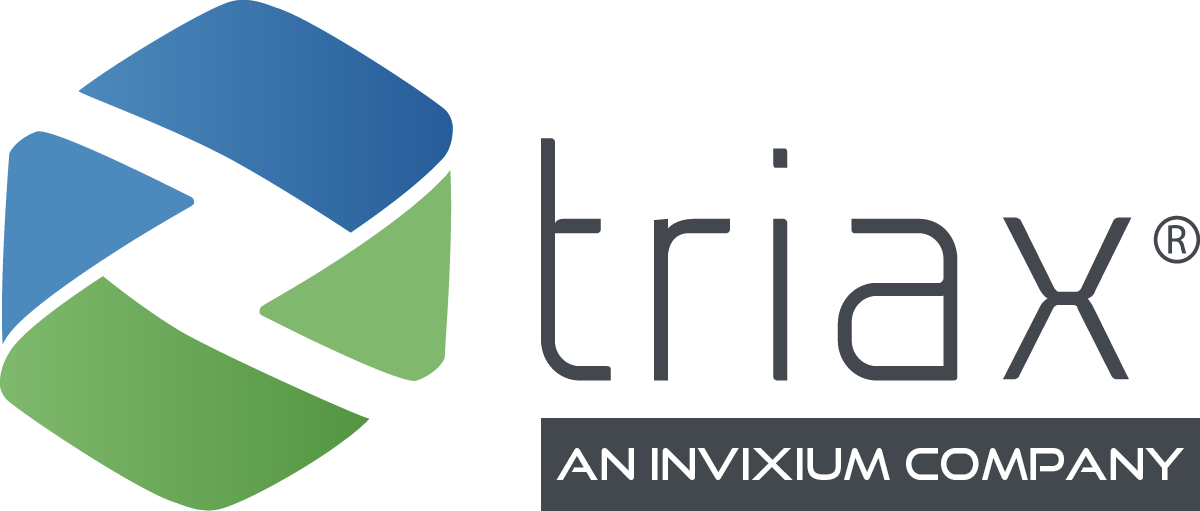Labor productivity is measured by evaluating the efficiency of workers in producing goods or providing services. This crucial metric impacts a company’s bottom line and plays a vital role in determining its operational output and growth potential.
What is Labor Productivity?
Labor productivity can be expressed as the quantity of output created per unit of labor input, like hours worked or personnel employed.
In the manufacturing industry, U.S. labor productivity is measured by evaluating the efficiency of workers in producing goods or providing services.
Importance of Labor Productivity on Industrial Worksites
In today’s competitive global market, improving labor productivity is essential for companies to operate at the highest levels of efficiency. On industrial worksites specifically, enhancing labor productivity can result in:
- Faster completion times for projects
- Better allocation and management of human resources
- Reduced waste due to inefficiencies
- An improved safety culture
To achieve these benefits, organizations must measure their current performance accurately.
What Are the Three Factors of Labor Productivity?
Labor productivity is measured by these three factors:
- Human capital: This refers to the knowledge, experience, and skill of workers within your organization — do your workers have the proper training and education to do their jobs well?
- Work environment: This encompasses the physical and psychological conditions of your workplace — are your workers physically and psychologically safe at work? What can you do to minimize risks of injury or other harm?
- Technology: This includes any tools, machines, or systems used to streamline operations and increase efficiency — do your workers have the right tools and systems to do their jobs?
Methods for Measuring Labor Productivity
What is labor productivity measured by? To accurately measure worksite labor efficiency variance, companies can employ various options, including output-based, input-based, and hybrid approaches. Each method has its strengths and weaknesses, depending on the situation.
Output-based measures
When using output-based measures, labor productivity is measured by assessing the output produced per unit of labor input (e.g., hours worked or the number of employees). Some common examples include:
- Gross Domestic Product (GDP) per hour worked: A macroeconomic indicator that compares countries’ economic performance by dividing GDP by total working hours.
- Revenue per employee: Calculates revenue generated divided by the number of employees within an organization.
- Pieces produced per worker: Evaluate manufacturing efficiency by comparing production volume with workforce size.
Input-based measures
When using input-based approaches, labor productivity is measured by inputs such as wages paid or investments made into human capital development programs like training initiatives.
- Labor cost per unit produced: Determines the average cost incurred in producing one unit through direct labor expenses like salaries or hourly wages.
- Average training investment per employee: Assesses organizational commitment towards developing talent by calculating total spending on employee development initiatives divided by workforce size.
Hybrid methods
Hybrid methods mean that labor productivity is measured by both output and input-based approaches to provide a more comprehensive understanding of U.S. labor productivity. These techniques consider multiple factors that influence worker performance.
- TFP: TFP is a multifaceted method that considers the combined effects of various components, such as labor, capital, and technological progressions, in producing economic output.
- Labor efficiency ratio: Compares actual hours worked with standard hours required for completing tasks, highlighting discrepancies between expected and realized workloads.
Advantages and Disadvantages of Measurement Methods
The advantages of using an output-based approach include greater accuracy in measuring labor performance, while input-based methods focus on long-term investments.
On the other hand, hybrid techniques provide a more holistic view of labor productivity but may take longer to implement.
Ultimately, the choice comes down to your organizational goals and time constraints.
What is a Good Labor Productivity Percentage?
Some say an excellent U.S. labor productivity percentage is between 70-75%. This means that workers spend 70-75% of their work time being productive and the rest of the time engaging in other activities, such as breaks, meetings, or training.
However, labor productivity will vary depending on the industry, organization, and other factors. Generally speaking, a higher labor productivity percentage is preferable as it indicates more output is being generated with less input. However, depending on the context, even small productivity gains can significantly impact an organization.
Role of Technology in Measuring Labor Productivity
Advanced tools like sensors, wearables, and Internet-of-things (IoT) devices play an increasingly important role in measuring U.S. labor productivity by collecting real-time data from various aspects of industrial processes. These technologies enable companies to monitor equipment utilization rates more closely while tracking workforce activities more precisely than ever before.
Sensors and wearables
Sensors and wearables are transforming the way businesses measure labor productivity on worksites. By providing wearables that monitor their movements, location, and vital signs such as heart rate or body temperature, companies turn each worker into a connected worker. They can gain valuable insights into worker productivity and safety.
For example, based on biometric data collected throughout the day, a sensor-enabled hard hat can detect where worker bottlenecks occur. This information helps supervisors make informed decisions about work allocation and breaks to ensure optimal performance.
IoT devices
The Internet of Things (IoT) refers to the network of interconnected devices that communicate through the Internet without human intervention and has revolutionized how industries approach U.S. labor productivity measurement.
IoT technology allows for seamless integration between machines and software systems across different stages of production processes.
- Data collection: IoT devices collect vast amounts of data from various sources, such as machine performance, worker activity, and environmental conditions. The amassed information is analyzed to detect tendencies and structures that can be employed to refine operations.
- Real-time monitoring: IoT-enabled systems provide real-time visibility into the entire production process. Managers can track equipment utilization rates, monitor worker productivity, and quickly address issues.
- Predictive maintenance: By analyzing historical data collected by IoT devices, companies can predict when equipment might require maintenance or replacement. This proactive approach helps reduce downtime and improve overall efficiency.
Incorporating technology like sensors, wearables, and IoT devices into labor productivity measurement strategies enhances accuracy and allows for more informed decision-making in managing workforce activities on industrial work sites.
As these technologies advance rapidly, businesses will have even greater opportunities to boost their operational efficiency through improved labor productivity management.
Spot-R™ IIoT Platform’s Impact on Industrial Worksite Efficiency
Spot-R can be used to measure labor productivity on industrial worksites, including its equipment monitoring and utilization features.
By leveraging Spot-R, companies can better monitor equipment utilization rates while gaining valuable insights into on-site worker activities, ultimately leading to increased efficiency across entire worksite ecosystems.
Equipment monitoring
Spot-R offers features designed to help site managers and supervisors track the performance of their assets and workforce. Some key functionalities include:
- Real-time equipment tracking: The system provides real-time data on the location, status, and usage of machinery and tools at any given time. This information allows for a more efficient allocation of resources based on demand or project requirements.
- Maintenance alerts: Spot-R helps prevent costly downtime by sending notifications when maintenance is due or when an equipment issue arises. This proactive approach ensures that problems are addressed before they escalate into major setbacks.
- Data analytics and reporting: The platform collects vast amounts of data from sensors installed throughout the worksite. These can then be analyzed using advanced analytics tools to identify trends in productivity levels over time and areas where improvements may be needed.
Use cases and applications
Beyond just measuring labor productivity, there are numerous applications for the Spot-R IIoT solution across various industries such as construction, manufacturing, mining, oil and gas exploration, among others.
Examples include:
- Worker safety: Monitor worker safety by tracking their location, detecting falls or accidents, and sending alerts in case of emergencies. This assists in lessening the possibility of accidents and guarantees a safer working environment for all.
- Scheduling optimization: By providing real-time data on equipment usage and labor productivity levels, Spot-R enables site managers to make informed decisions about scheduling work shifts and allocating resources more effectively based on project needs while minimizing downtime due to maintenance or other factors.
- Compliance and regulatory reporting: The Spot-R system simplifies compliance with industry regulations by automatically generating reports that detail equipment usage rates as well as worker hours spent on various tasks throughout the day, ensuring accurate record-keeping without manual intervention from staff members.
Incorporating the Spot-R IIoT platform into industrial worksites enhances labor productivity measurement and offers numerous benefits related to asset management, workforce safety, and schedule optimization, among others. This makes it a valuable tool for companies looking to improve overall operational efficiency.
See how Spot-r Improves Labor Productivity on Industrial Worksites
Overall, labor productivity is measured by the efficiency and effectiveness of workers on industrial worksites. Various methods for measuring labor productivity include output-based, input-based, and hybrid approaches. Each method has its own pros and cons.
However, with technology such as our Spot-R IIoT platform, it is now possible to measure labor productivity in real time using equipment monitoring and utilization features. This can help improve safety, reduce downtime, optimize workflows, and ultimately increase profitability.To learn more about how the Spot-R platform can help your business measure labor productivity on industrial worksites to drive better results across your projects, book a demo of Spot-r today.

